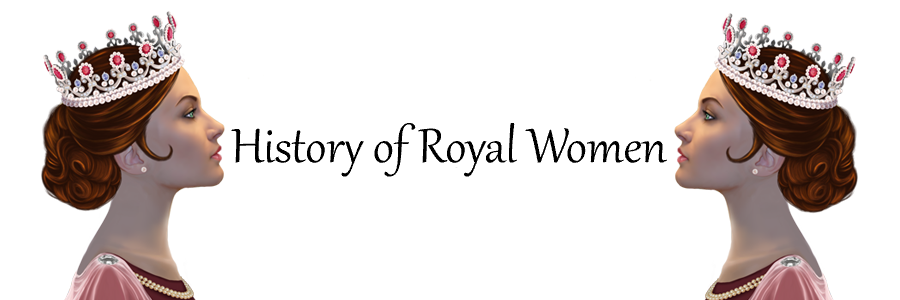
Ernestine Charlotte of Nassau-Siegen was born on 23 October 1623 as the daughter of John VIII, Count of Nassau-Siegen and Ernestine Yolande of Ligne.
She was probably born in Brussels. Her siblings were: Maria (1619-1620). an unnamed sister (born and died 1620), Claire Marie (1621 -1695), Lamberta Albertine (1625-1635) and Johann Franz Desideratus (1627-1699). Her father converted to the Catholic faith, and the family lived mostly in the Spanish Netherlands while he was in the service of Spain. He became an Imperial Field Marshall in 1629 and a Knight in the Order of the Golden Fleece in 1630. He was not close to his ancestral county of Nassau-Siegen, but he was even more loyal to Spain. Isabella Clara Eugenia, the Governor of the Habsburg Netherlands, was the godmother to Ernestine Charlotte’s sister, Claire Marie.1 Ernestine Charlotte and her siblings spent their youth in the Nassau Palace in Brussels and the Renaix estate near Oudenaarde.

The family was painted by Anthony van Dyck in 1634. It is not clear if Ernestine Charlotte had already developed a love for portrait painting back then, but it would certainly grow in the years to come. The family lived in luxury, but they were still in the shadow of more prestigious families of the time. In the same year as the family portrait, Claire Marie married Albert Henri, 2nd Prince of Ligne. She was widowed 7 years later and married her husband’s brother and successor, Claude Lamoral, 3rd Prince of Ligne. Ernestine Charlotte’s other sister, Lamberta Albertina, died in 1635, leaving Ernestine Charlotte as the only unmarried daughter when her father’s luck turned. He was stripped of his command in 1637 and died at Renaix after fighting the French on 27 July 1638.
Both Claire Marie and Ernestine Charlotte had an affinity for painting, but it is unclear from whom Ernestine Charlotte received her training as a painter. Her portraits appear to be influenced by Anthony van Dyck.2 It seems likely that her training came from someone in his circle at least. There appears to have been some contact with Gerard van Honthorst.3 Her future husband also had himself painted by Gerard van Honthorst.
Ernestine Charlotte painted several paintings of women, and they have survived to this day. Although these were unlikely to be intended as a series, they appear similar to a gallery of beauties. She also did a self-portrait, which can be seen at the top of this article. The women depicted were sometimes painted from life, but some were also based on other portraits, and they thus never posed for Ernestine Charlotte. She painted these between the years 1640 and 1650, and around 16 portraits are known.
In 1640, Ernestine Charlotte’s future husband came to the Jesuit college in Brussels to study – his name was Maurice Henry, and he succeeded as Prince of Nassau-Hadamar in 1653. They were cousins and shared an ancestor in John VI, Count of Nassau-Dillenburg. His affection for her was apparently quite clear early on, but Ernestine Charlotte was more inclined towards the monastic life. Nevertheless, the two were engaged on 14 October 1649.4 Maurice Henry was an Imperial Colonel at the time of the engagement.
The two were married on 15 February 1650 at the Saint Jacques-sur-Coudenberg Catholic Church, following a papal dispensation that had been granted on 1 December 1648. There are no more known portraits by her following her marriage. The following June, they departed by ship to The Hague and then went up the Rhine and Lahn to Ems. Their final destination was Hadamar, where they were to take up residence. In Hadamar, Ernestine Charlotte was praised for her skills, and “this Princess is very clever in the same business and knows how to look for money properly.”5 She also managed to secure a lucrative position for her husband. Nevertheless, the transition from Brussels to Hadamar was difficult for her, and she was plagued by illnesses and constant pregnancies.
Ernestine Charlotte gave birth to her first child on 17 February 1651. It was a daughter who was named Ernestine Ludovika. She was already ill when she went into labour, and she remained quite ill for the following four weeks. Reports of illness continued throughout the year.6 In 1656, it was reported that she was dealing with a continuous indisposition and that she was often bedridden. She devoted herself to St Xavier for nine days, which brought on a period of recovery. She also often spent the summer months at Mengerskirchen.
Several more children followed over the years: Johann Lamoral (born 1653 – died 1654), Philipp Karl (born 1656 – died 1668), Franz Kaspar (born 1657 – died 1659), Claudia Franziska (born 1660 – died 1680) and Maximilian August (born 1662 – died 1663).
In 1667, she made her will and made a final trip to the Netherlands in May 1668. Her mother died at Renaix on June 1668. Shortly before their return to Hadamar, their eldest surviving son, Philipp Karl, died at the age of 13. Ernestine Charlotte became ill once again, complaining of stomach pains. She received the last rites on 15 August 1668 while she was at Mengerskirchen Castle. She died that day between 9 and 10 in the evening.
Most of her paintings made their way to the Lobkowicz collection in Prague due to Claudia Franziska’s marriage to Prince Ferdinand August von Lobkowitz. Some have ended up in Belgium and Germany.












Be the first to comment